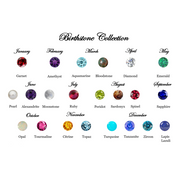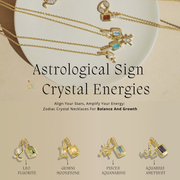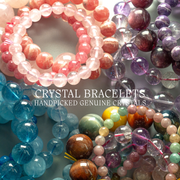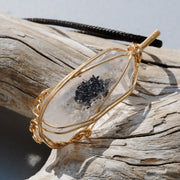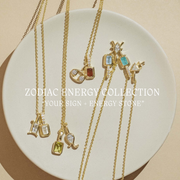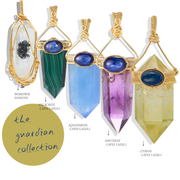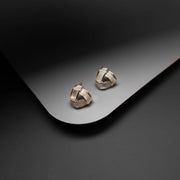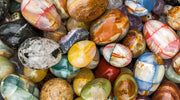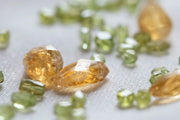Zircon History
Ancient Origins
Zircon is one of the oldest known minerals on Earth, with crystals discovered in Australia dating back over 4.4 billion years. Its deep historical roots make it not just a gemstone of beauty but a witness to Earth’s earliest geological evolution. Ancient civilizations admired zircon for its brilliance and ability to capture light much like a diamond. The name “zircon” is believed to come from the Arabic word zarqun, meaning “cinnabar” or “bright red,” and the Persian word zargun, meaning “gold-colored.” These references hint at the gem’s diverse hues and captivating radiance.

Cultural Significance
Throughout history, zircon has held an esteemed place in various cultures. In the Middle Ages, it was believed to bring wisdom, prosperity, and honor to its wearer. Indian Vedic astrology associates zircon with Venus, the planet of love and beauty, suggesting that it enhances charm and attraction. During the Victorian era, zircon became a popular gemstone for jewelry, particularly blue zircon, which rivaled the brilliance of aquamarine and topaz. Its luminous fire made it a prized stone among royalty and artisans alike.

Symbolic Uses Through History
Zircon was often used as a protective talisman against evil and nightmares. Travelers in ancient times carried zircon to ensure safe journeys and peaceful sleep. The gem also symbolized integrity and balance, encouraging honesty and moral strength. Today, zircon remains a symbol of spiritual grounding and clarity, helping people align with truth and inner peace.

Table of contents

Origin
Sri Lanka – Known for producing a wide range of zircon colors, including golden, brown, and vivid blue, with exceptional clarity and brilliance.
Cambodia – Famous for its radiant blue zircon found in the Ratanakiri province, prized for its vivid hue and diamond-like sparkle.
Australia – Home to some of the world’s oldest zircon deposits, often used for scientific study due to their ancient geological origins.
Feature
Chemical Formula: ZrSiO₄ – zirconium silicate, belonging to the nesosilicate mineral group.
Mohs Hardness: Zircon measures 6 to 7.5 on the Mohs scale, offering good durability but requiring gentle handling to avoid scratches or damage from harder gems.
Color: Zircon occurs in a wide array of colors—blue, yellow, brown, green, red, and colorless. Trace elements such as uranium, thorium, and iron influence these hues. Heat treatment is often applied to enhance its blue or golden tones.
Symbolism: Zircon represents clarity, wisdom, and balance. It is believed to bring peace of mind, increase self-confidence, and stimulate spiritual energy. In metaphysical beliefs, zircon enhances mental focus and inspires honesty and compassion.
-
Chakra:
Root Chakra (Muladhara): Grounds the spirit and provides emotional stability.
Crown Chakra (Sahasrara): Opens pathways to higher consciousness and spiritual insight.
-
Zodiac:
Virgo
Sagittarius
Benefits
Emotional Balance and Clarity
Zircon is often called the “Stone of Mental Clarity” for its ability to sharpen intuition and focus. It clears emotional confusion, helping the wearer find balance between heart and mind. This makes it particularly beneficial during stressful decision-making or emotional transitions.
Prosperity and Confidence
Zircon is associated with abundance and self-assurance. It enhances personal magnetism and creativity, attracting opportunities for success and prosperity. Many use it as a manifestation stone to align intentions with achievable goals and positive outcomes.
Protection and Energy Cleansing
Known for its protective properties, zircon helps ward off negative energies and spiritual blockages. It purifies the aura, restoring vitality and renewing one’s sense of purpose. Its grounding energy provides emotional protection, keeping the wearer centered in times of chaos.
Physical Healing
In crystal healing, zircon is said to support the liver, lungs, and digestive system. Its restorative vibrations are believed to promote better sleep, reduce fatigue, and boost overall energy levels. Practitioners often recommend zircon for those seeking recovery from chronic stress or exhaustion.
Spiritual Enlightenment
Zircon’s connection to the Crown Chakra makes it an excellent stone for meditation and spiritual growth. It enhances awareness, intuition, and connection to universal energies, making it a favorite among those exploring mindfulness or energy healing practices.
Type
Blue Zircon
Blue Zircon is the most popular and valuable variety, admired for its vivid brilliance and diamond-like fire. Heat-treated to achieve its radiant sky-blue hue, it symbolizes wisdom, peace, and spiritual awakening. Jewelry enthusiasts favor it for its sparkle and rarity.
Golden Zircon
Golden or honey-colored zircon exudes warmth and positivity. It’s known as a stone of joy, prosperity, and self-confidence. Its sunny glow makes it a powerful charm for attracting abundance and promoting self-expression.
Colorless Zircon (White Zircon)
Often mistaken for diamond due to its high refractive index, colorless zircon is prized for its pure brilliance. It represents clarity, purity, and spiritual alignment, making it ideal for meditation and cleansing rituals.
Brown and Red Zircon
These earthy tones symbolize grounding and stability. Brown zircon connects deeply with the Root Chakra, promoting strength and endurance, while red zircon is associated with passion, energy, and motivation.
Care & Maintenance
Cleaning
Clean zircon gently using mild soap, lukewarm water, and a soft brush or cloth. Avoid ultrasonic cleaners or steam cleaning, as rapid temperature changes may fracture the stone.
Storage
Store zircon separately in a soft pouch or cloth-lined box to prevent scratches. Keep it away from harder gemstones such as sapphire or diamond, which can damage its surface.
Handling
Avoid exposing zircon to harsh chemicals, cosmetics, or extreme heat. Always put on zircon jewelry after applying perfume or lotion, and remove it during physical activities to maintain its brilliance and color.
FAQs
Q: Is zircon the same as cubic zirconia?
A: No, zircon is a natural gemstone, while cubic zirconia is a synthetic material created to mimic diamond.
Q: Does zircon lose its color over time?
A: Some heat-treated zircons may slightly fade after prolonged exposure to sunlight, but with proper care, their color remains stable.
Q: Is zircon a birthstone?
A: Yes, zircon is one of the traditional birthstones for December, symbolizing wisdom, prosperity, and spiritual clarity.
Q: Is zircon rare?
A: While zircon is not as rare as Tanzanite or Alexandrite, gem-quality blue and red zircons are relatively uncommon and highly valued.
Q: Can zircon be worn daily?
A: Yes, but handle it with care to avoid scratches, as zircon is softer than some other gemstones commonly used in daily jewelry.
Final Thoughts
Zircon: Benefits, Properties and Meaning of the Stone reflect the gemstone’s incredible versatility, brilliance, and historical significance. From ancient civilizations to modern jewelry design, zircon continues to inspire admiration with its kaleidoscope of colors and exceptional light reflection. Beyond its visual beauty, zircon serves as a powerful crystal for clarity, grounding, and emotional balance. Whether worn as jewelry or used for spiritual healing, zircon symbolizes harmony between body, mind, and spirit—a timeless treasure that illuminates both inner and outer brilliance.

